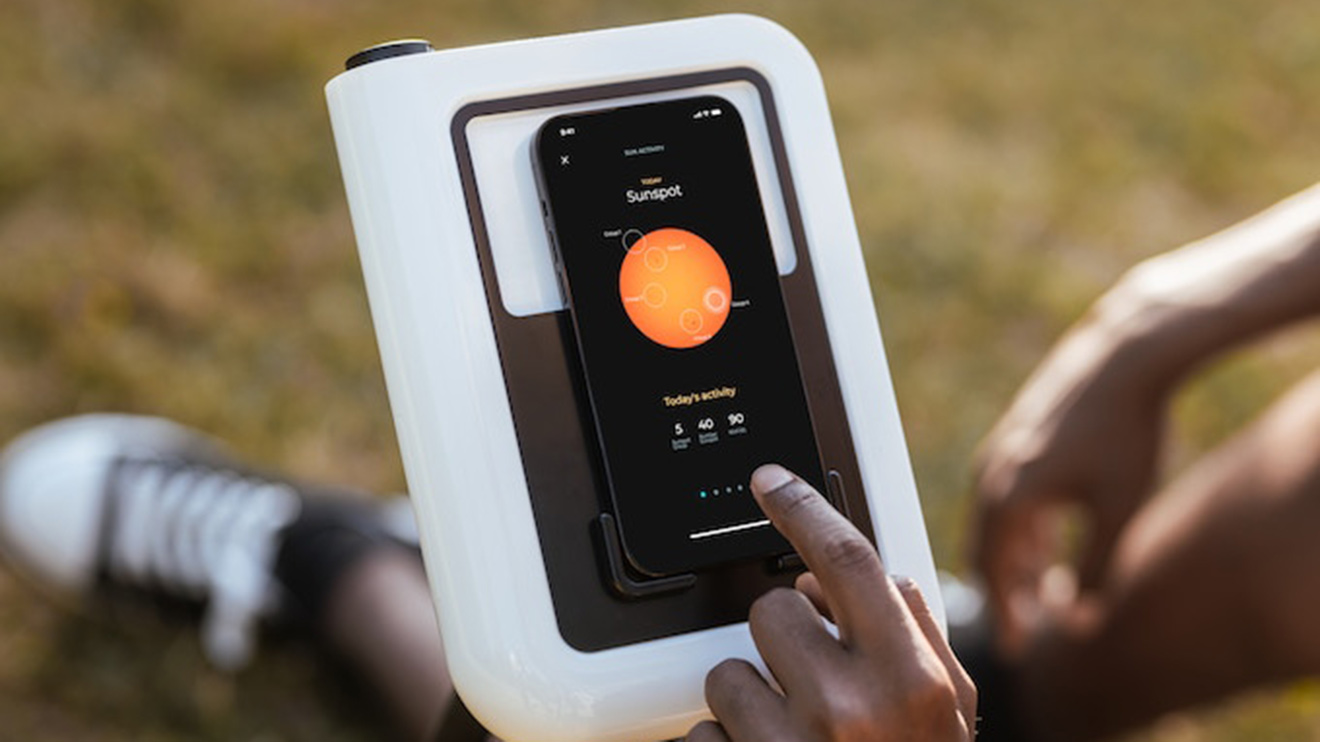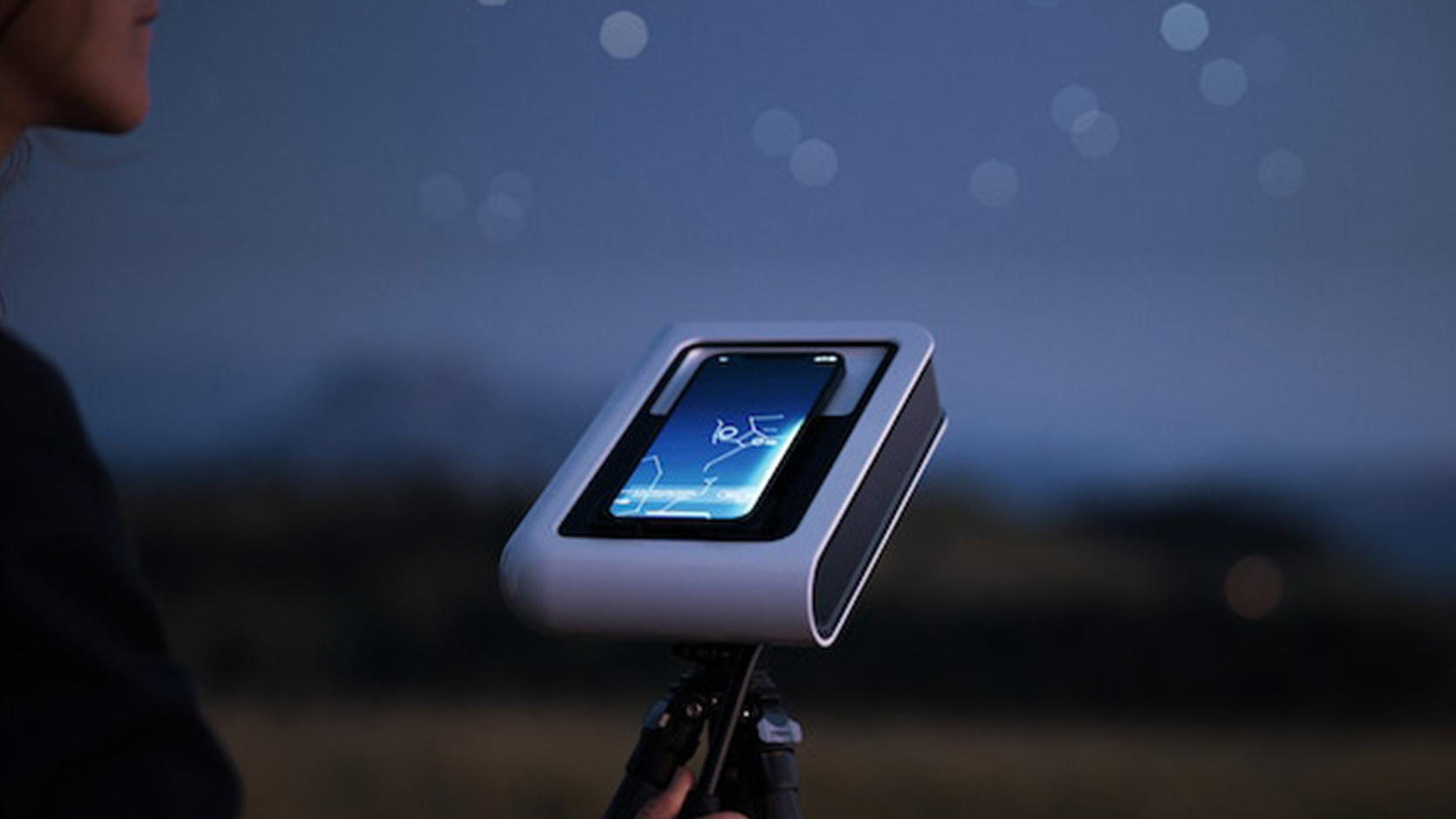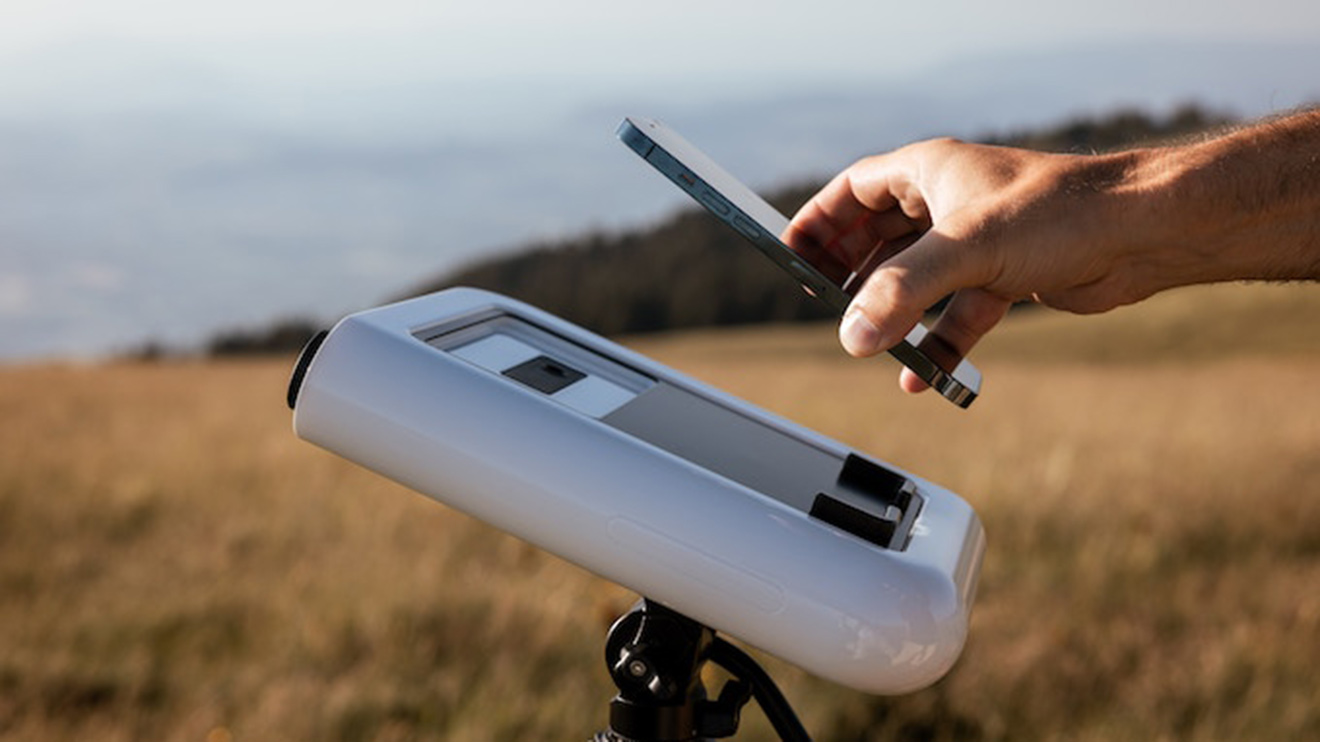The Vaonis Hestia telescope could be the ultimate smartphone accessory for astronomy novices

We’re still reveling in Perseids meteor shower glory, so naturally a project from an established telescope maker has caught our attention. The Vaonis Hestia ‘smart’ telescope is one to watch, with its Kickstarter finishing on August 17.
So far, more than 10,000 people have backed the Hestia to the tune of over $2.5 million, and there’s every reason to believe this compelling cameraphone accessory – which Vaonis describes as the first-ever smartphone-based telescope – will find its way into the hands of backers, given that the company has already delivered two ambitious telescopes to market, namely the Vespera and Stellina.
But what is Hestia, and why is it such an exciting prospect?

Stargazing for all
France-based Vaonis has been disrupting the telescope market, evolving the design of these stargazing devices into something more compact, slick, and connected to create what it calls ‘smart’ telescopes.
The Vaonis Vespera and Stellina do away with the traditional telescope eyepiece and instead connect to your phone to view the skies above, via Vaonis’ Gravity app. But at $1,499 (£1,200 and AU$2,400 approx) and $3,999 (£3,150 and AU$6,200 approx) respectively, their appeal is limited to enthusiasts or those flush with cash. The Hestia also connects to your phone, but it’s altogether different in that it uses your cameraphone to take pictures.
A first glance the Hestia doesn’t scream telescope. It’s the size of a book, with magnetic brackets that snap into place to hold your phone and line its camera lens up with its ocular, which provides a 25x magnification for your camera phone, and what Vaonis claims is a 5x sharper image.

You’ll be able to observe the moon close up, the ‘once in a lifetime’ complete solar eclipse across North America in April 2024, and even more distant planets.
Sign up for breaking news, reviews, opinion, top tech deals, and more.
Vaonis says it takes a couple of minutes to align your phone, while its Gravity app boasts super-sophisticated astronomy tools to compose your sky shots. Overall, the Hestia should be absolute child’s play for astrophotography using your iOS or Android device, with handsets up to five years old being compatible.
Here’s the best part: the Hestia ‘Solo Pack’ will only cost $249 (£200 / AU$400 approx) when it comes to market, which is pocket change compared to Vaonis' other offerings; and Kickstarter backers can get a 20% discount before 3pm BST on August 17 (7am PDT / 10am EST / midnight AEST. A costlier ‘Standard Pack’ adds a tripod, while the ‘Solar Pack’ also includes a hard case and a solar filter – all important for that solar eclipse event next year. At the time of writing, delivery is scheduled for December 2023, and 'guaranteed' for the aforementioned US solar eclipse.
The Hestia may lack the sophisticated motorized tools of the Vespera and Stellina, which utilize your phone’s GPS to track specific features in our skies, but it promises to be the smart telescope for everyone, and we think it could be. We're aiming to get hands-on with it soon and share our real-world experience – if it lives up to expectations we might just see an explosion of novice astrophotographers next year and beyond.


Tim is the Cameras editor at TechRadar. He has enjoyed more than 15 years in the photo video industry with most of those in the world of tech journalism. During his time as Deputy Technical Editor with Amateur Photographer, as a freelancer and consequently editor at Tech Radar, Tim has developed a deeply technical knowledge and practical experience with cameras, educating others through news, reviews and features. He’s also worked in video production for Studio 44 with clients including Canon, and volunteers his spare time to consult a non-profit, diverse stories team based in Nairobi. Tim is curious, a keen creative, avid footballer and runner, and moderate flat white drinker who has lived in Kenya and believes we have much to enjoy and learn from each other.